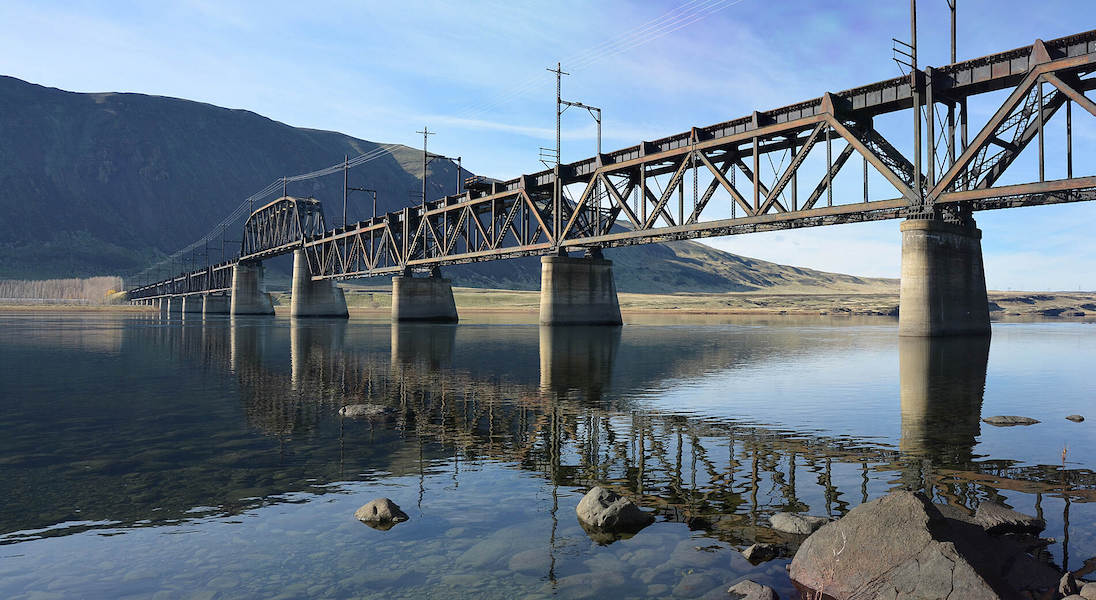Bridges
Delaware & Lehigh Trail | Photo by Thom Carroll
Whether crossing a small stream or the Mighty Mississippi River, bridges are integral to trail systems, creating much-needed connections between trail segments, cities and even states. Bridges are among the most challenging elements of multi-use trail design and development because they require an understanding of physics, architecture and engineering. At the same time, bridges can be some of the most memorable features of a multi-use trail—especially if they offer compelling views or if the structures themselves are historically or architecturally interesting.
Pre-existing Railroad Bridges
Consult a structural engineer before completing bridge designs. The structural engineer will evaluate the footings or piers that support the bridge, the bridge’s superstructure and its approaches. Remind your structural engineer that the live load for future trail use will be substantially less than that which the bridge was built to support. Reducing the live-load rating can result in a different evaluation of the bridge’s capacity and capability.
Historical Significance
If you believe your bridge has historical significance, have a local historian, architect or engineer assess its value. Check with your state historic preservation officer to determine if the bridge has been identified as historic, making it eligible for the National Register of Historic Places. Verify important information such as construction date, architectural or structural style, original designer or engineer, and original building contractor, as well as unique features of the bridge.

Bridge Design
For new bridges, the selection of type and design is often driven by the type of foundation best suited to the site, given local soils, the span for the bridge and load-bearing requirements. A bridge on a multi-use trail should be able to support at least 12,500 pounds. Its superstructure can be made of wood, metal, concrete, high-strength metal alloys, steel cable or rope, while its decking can be made of wood or concrete poured over corrugated metal.
Bridge Decking
A surface installed on a bridge to make it usable for trail purposes is called decking. The decking of a biking/pedestrian bridge should be durable and non-slip; avoid steel grating because it is very slippery for bicycles when wet. If the chosen decking is treated wood planks, they should be laid perpendicular to the trail to prevent bike tires from catching on an edge and throwing the bicycle off balance.
Bridge Width
Bridge widths should, at a minimum, match the width of the trail. In cases where the trail is groomed for cross-country skiing or snowmobile use, a wider bridge is recommended. To allow use by emergency vehicles, the bridge should be at least 10 feet wide.
Bridge Railings
Typical railing height is 42 to 48 inches; although, if there are equestrians on the bridge, the railing should be higher. Horse riders should dismount their horses and lead them across bridges or next to bridges that only cross shallow bodies of water. Since not all users will adhere to this rule, make rails sturdy and at least 54 inches in height when expecting horse traffic. In cases where the bridge crosses a roadway or railroad, a high, protective screening or fence (72 to 96 inches) can be considered.
Bridge Approaches
Bridge approaches have two basic requirements: approach railings that facilitate safe passage onto the bridge and an adequate approach width. Sight lines onto the bridge should be free of obstructions, and the approach to the bridge should be wider than the trail to accommodate potential congestion on and near the bridge.
Prefabricated Bridges
Constructed from wood, steel, high-strength metal alloys or concrete, “prefab” bridges have several advantages, including low cost, minimal disturbance to the project site and, usually, simple installation that requires minimal skill and expertise. In addition, the bridge can be manufactured in advance of other construction.
Because of the large number of variables involved in creating trail facilities on new and existing bridges, compromises in desirable design criteria are often inevitable. Make your decisions based on cost, style and environmental compatibility.
Resources
‣ Blog Post –Bridge to Everywhere: Examining Signature Gateways Across America
‣ Blog Post– 20 Iconic Bike and Pedestrian Bridges in America
TrailNation Collaborative
TrailNation™ Collaborative is a nationwide peer learning community from Rails-to-Trails Conservancy that brings together advocates, leaders and professionals from across disciplines to establish and accelerate trail networks across America. The collaborative provides proven tools, methods and resources, combined with RTC’s expertise and network of partners across the country, to accelerate the development of connected trail systems. When trails are connected across regions and states, trail networks have a proven transformative impact—they are essential infrastructure that creates thriving, healthier communities.